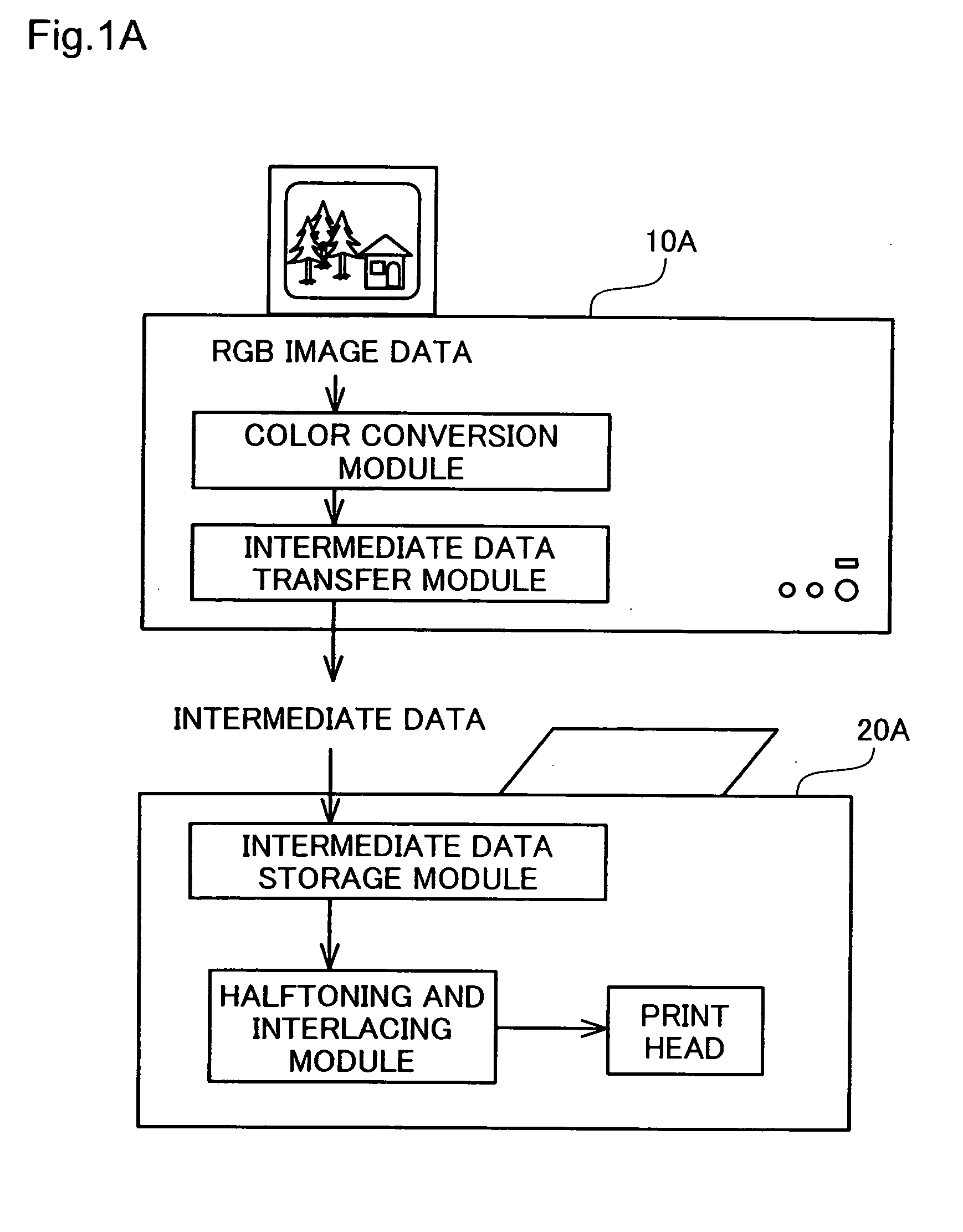Print system printing data while storing under compressed state, and printer for use therein
a printing system and compressed state technology, applied in the direction of printing units, instruments, digital output to print units, etc., can solve the problem of reducing the capacity of dot data
- Summary
- Abstract
- Description
- Claims
- Application Information
AI Technical Summary
Benefits of technology
Problems solved by technology
Method used
Image
Examples
first embodiment
[0082]FIG. 3 schematically illustrates the structure of the color printer 200 in the The color printer 200 is an inkjet printer that is capable of creating four color ink dots, cyan, magenta, yellow, and black. The color printer 200 may alternatively be an inkjet printer that is capable of creating six color ink dots including cyan ink having a low dye density (light cyan ink) and magenta ink having a low dye density (light magenta ink), in addition to the above four color inks. In the description below, cyan ink, magenta ink, yellow ink, and black ink are referred to as C ink, M ink, Y ink, and K ink.
[0083] As illustrated, the color printer 200 has a mechanism of actuating a print head 241 mounted on a carriage 240 for ink ejection and dot creation, a mechanism of activating a carriage motor 230 to move the carriage 240 back and forth along an axis of a platen 236, a mechanism of activating a paper feed motor 235 to feed printing paper P, and a control circuit 260 that controls do...
second embodiment
[0145] F. Outline of Image Processing in Second Embodiment
[0146] A second embodiment of the invention is described below. The printing system of the second embodiment corresponds to the mode shown in FIG. 1B and has the hardware construction identical with that of the first embodiment. In the second embodiment, the control data used for controlling ejection of ink droplets are generated by a series of image processing of an object image to be printed. FIG. 15 is a flowchart showing a process of generating control data and printing an image (image printing process). As described below, in this embodiment, the first half of the image printing process is executed by the CPU built in the computer 100, while the latter half of the image printing process is executed by the CPU built in the control circuit 260 of the printer 200. The outline of the image printing process is described below according to the flowchart of FIG. 15.
[0147] When the image printing process starts, the computer 10...
PUM
 Login to View More
Login to View More Abstract
Description
Claims
Application Information
 Login to View More
Login to View More - R&D
- Intellectual Property
- Life Sciences
- Materials
- Tech Scout
- Unparalleled Data Quality
- Higher Quality Content
- 60% Fewer Hallucinations
Browse by: Latest US Patents, China's latest patents, Technical Efficacy Thesaurus, Application Domain, Technology Topic, Popular Technical Reports.
© 2025 PatSnap. All rights reserved.Legal|Privacy policy|Modern Slavery Act Transparency Statement|Sitemap|About US| Contact US: help@patsnap.com



